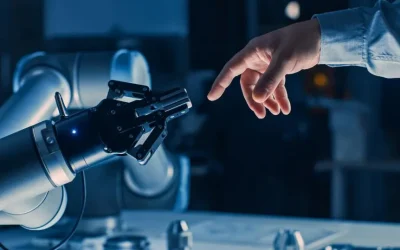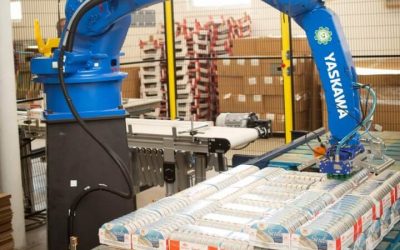In August 1987, the world was in a deeply dire state. Sixty years of chlorofluorocarbon (CFCs) filled refrigerators and aerosol spray cans had depleted a large part of the ozone layer to a perilous level. A future of blinded children, scorched earth and extreme sunburns was not hyperbole, it was to be mankind’s destiny.
Then, just one month later, on September 16, 1987, the Montreal Protocol was ratified. This rare coming together of science and dogged political will marked the beginning of the biggest environmental repair job in history. All the signatories committed to enacting laws which would ban the use of CFCs, and despite an abundance of pessimism, it worked.
Today, the hole that once loomed over Antarctica and our collective consciousness no longer presents the global threat it once did. But as we are all acutely aware, when it comes to climate change, we are in hot water.
The acidification of the ocean, often referred to as, “climate change’s evil twin” is bombarding us with a slew of environment-altering problems. Shellfish are developing “osteoporosis of the sea”, and rampant growth of algae species are producing more toxins which are compounded by ocean acidification.
Furthermore, this acidification has halted the ability of the ocean to absorb harmful carbon dioxide in its tracks. Since humankind’s widespread adoption of fossil fuels two hundred years ago, the world’s oceans have absorbed over 150 billion tonnes of carbon dioxide. Two thirds of the earth’s surface that was once our greatest carbon sequestration asset, kept the delicate global climate in balance, but it is now all but lost as a resource.
Although the scale of the problem seems to be as vast as the deep blue sea, the brightest and most creative minds in climate-tech are charting a steadfast path towards reversing the acidification of the ocean. Planetary Technologies is an intrepid team of scientists, oceanographers, and engineers who have combined their skills to restore the climate and heal the ocean.

Carbon Capture Engineering – Evolution of Planetary’s idea to product prototype and installation
Great Big Sink
Today, as jurisdictions scramble to remediate the climate crisis through adaptation and mitigation, strong-willed, keen-eyed start-ups like Planetary Technologies are steadfast in reversing the causes.
Ocean Alkalinity Enhancement (OAE), a process researched and refined by co-founder Dr. Greg Rau over forty years, removes carbon from the atmosphere whilst safely reducing ocean acidification. Two birds, one stone, if you will. By introducing Brucite (the raw mineral form of Magnesium Hydroxide) in measured and controlled amounts, the seawater’s PH level is returned to a more natural, more alkaline state, thus re-animating the world’s largest carbon sink, or more accurately, the world’s largest carbon sequestration tool.
This method of deacidification, at its base level (pun intended) is akin to giving heartburn medication or Pepto-Bismol to a needy tummy, in this case the world’s oceans.
The science was proven at the laboratory level, but how would one deliver an antacid effectively, safely, and in the right concentrations in larger settings? The idea is simple at its heart. All around the globe there are wastewater treatment facilities, power plants, mills and other industries evacuating treated, and mostly tested, effluent into the ocean.
On Canada’s east coast, nestled in the Halifax harbour is Tufts Cove; home to a power generating station that uses natural gas to drive its turbines. The irony is not lost that a company determined to reverse greenhouse gas emissions is using the outfall from fossil fuels to deliver a remedy, – pure and salient poetry in fluid motion.
The team at Planetary has seized on the opportunity to piggyback on these industrial currents, to trial the theory. But this ingenious and resourceful idea requires a control and delivery system that is a feat of engineering outside of Planetary’s wheelhouse.

Batching, mixing and transferring a slurry into an agitated dosing tank allows for continuous ocean alkalinity enhancement
Science. Check. Location. Check.
A serendipitous meeting at a networking event led Planetary to Enginuity, a creative engineering firm that offers turnkey solutions to companies in need of diversified skillsets including building scalable, physical production prototypes.
“The process was not as simple as just delivering the solution into the harbour” explains Enginuity Program Manager Rhodri Armour. “They had an idea of how it might work, but no way of making it work. You intake from the sea, it goes through a variety of things before it goes into this prep tank with a mixer in it. And you then add a mineral into a tank and you make a slurry. You then move the slurry back over into a holding tank, and then you dose it out slowly to the outfall and to the delivery point in the water.”
This dosing and delivery system engineered by Rhodri and the Enginuity team would now allow Planetary to manage and monitor the amounts and concentrations of the Brucite into the cove with extreme accuracy. This prudent exercise allows for precise data collection throughout the duration of the experiment. However, not only is the data gathered reliable and controlled, but the health of the surrounding marine life and the cove can be strictly monitored; an aspect that is of utmost importance to all involved parties and stakeholders.
Planetary has recently christened the system, SAM (Site Automation and Monitoring) tool. This encompasses both the dosing/batching system designed and built by Enginuity and includes some small sensor arrays, for real-time data collection.

Designing and assembling of the control system hardware and software for the pumps and sensors that form a crucial part of the dosing system
The possibilities, both environmentally and commercially, of this type of carbon sequestration are as vast as the ocean is deep and wide. And as the Tufts Cove site proves it’s efficacy, other sites are readying themselves to make waves with Planetary’s technology.
If we are to repair the damage done to our environment and ensure a plausible future for our children and grandchildren, relationships like Planetary and Enginuity’s will be the cornerstone. Effective experimentation and climate change mitigation will be a team effort. We have both the resources and the resourcefulness. All that remains is to make it happen. It was done before in 1987 in Montreal, and we will do it at Tufts Cove today.



